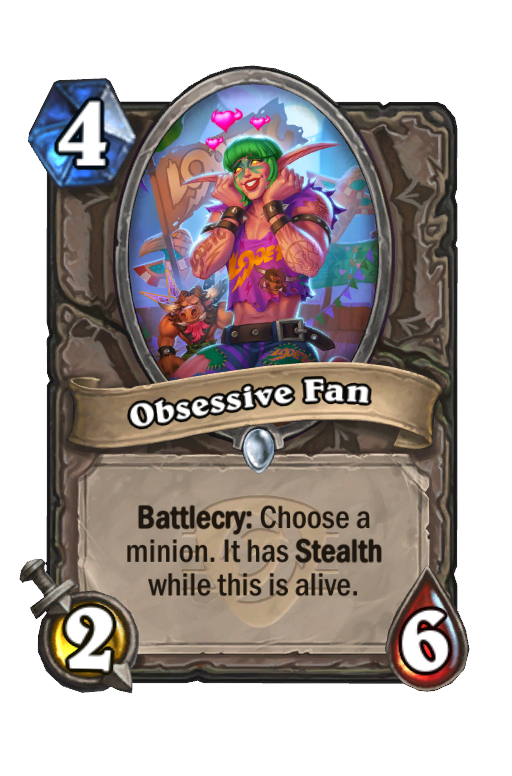Ever found yourself captivated by a character, a band, or a sports team, so much so that your enthusiasm borders on the all-consuming? The world of fandom, particularly in the age of the internet, has given rise to a new breed of devotee: the stan, and understanding this phenomenon provides a fascinating glimpse into modern culture and the evolving nature of obsession.
The term stan has rapidly permeated our vocabulary, moving from the realm of slang to a widely recognized descriptor. It signifies an individual who exhibits an intense and sometimes unwavering devotion to a particular celebrity, artist, or entity. This level of engagement often transcends mere appreciation, encompassing an active participation in the subject's world, a zealous defense of their work, and an intricate understanding of their every move. The origins of the word, ironically, are rooted in the cautionary tale presented in Eminem's 2000 song Stan. The song portrays an overzealous fan whose obsession ultimately leads to tragedy. This stark portrayal provided a linguistic framework for a behavior that, while existing long before the song, was only just being recognized as its own specific brand of fan behavior.
The stan phenomenon is a multifaceted issue that extends beyond the simple realm of entertainment. It touches on issues such as parasocial relationships, the construction of identity, and the role of social media in fostering and amplifying fan cultures. Let's delve deeper into these aspects.
The modern stan culture is heavily influenced by social media platforms. Platforms like Twitter, Instagram, TikTok, and dedicated fan forums serve as the primary hubs for fans to connect, share information, and engage in conversations about their objects of affection. This constant connectivity allows for an unparalleled level of access to information and a sense of community among fans. They become intimately involved in their favorite celebrity's life, dissecting every post, interview, and public appearance for hidden meanings or new information. This level of detail often results in the formation of complex narratives surrounding their chosen subject.
The digital landscape is also a breeding ground for intense loyalty and protection. Stans are often incredibly protective of their favorite celebrities, using social media to defend them against criticism and negative comments. They may engage in online campaigns to support their chosen icon, either by boosting their content or organizing efforts to get them trending on various platforms. This can include both positive actions, such as promoting a new song, and sometimes negative behaviors, such as aggressively attacking anyone perceived to be critical of the celebrity.
The term stan isn't just about passive admiration; it's about active participation and investment. Stans often invest their time, energy, and sometimes their money, in supporting their chosen entity. This can manifest in various ways, from attending concerts and buying merchandise to creating fan art and writing fan fiction. This level of engagement fosters a deeper sense of connection, making the celebrity's success feel like their own.
The intensity of this connection can sometimes blur the lines between fan and celebrity. The rise of parasocial relationships, where fans develop a one-sided connection with a celebrity, contributes to this blurring of lines. The celebrity's persona, meticulously crafted through social media and public appearances, creates a sense of intimacy that fosters a feeling of genuine connection, even if the interaction is limited or one-sided. This phenomenon is not new, but the ubiquity of social media has amplified its effect.
The creation of fan communities also plays a critical role in shaping the stan experience. Online communities are often tightly knit groups with their own internal norms and values. These communities provide a safe space for fans to share their passion, build relationships, and support one another. However, these communities can also become echo chambers, reinforcing beliefs and making it difficult for members to hear opposing viewpoints. These groups can foster a sense of belonging and shared identity.
The phenomenon of stan culture has been recognized by various media outlets and academics. It's a reflection of societal changes, including the democratization of media, the power of celebrity culture, and the pervasive influence of social media. Understanding stan culture requires considering its many facets, from the positive aspects of community building and creative expression to the potentially harmful elements of online harassment and unhealthy obsession. It's a dynamic and ever-evolving phenomenon, and a subject ripe for further study.
The term stan has also found its way into crossword puzzles, frequently appearing as a clue for obsessive fan. The answer, as you might expect, is almost always STAN, highlighting the term's widespread adoption into everyday usage.
The term stan first emerged around the year 2000, following the release of the Eminem song. The word itself serves as a reminder of the potential dangers of unchecked obsession. The story told in the song is a cautionary tale about a fan named Stan, whose obsession with Eminem spirals out of control. The song presents the potential for the individual to lose contact with reality, eventually leading to a tragic outcome.
The concept of stan is very much related to other behaviors, such as group-think and echo chambers. As individuals share their views and opinions within these echo chambers, their beliefs can strengthen and their interactions with those outside of those circles may suffer.
The stan culture, both online and off, provides a fascinating lens through which to examine the ever-shifting nature of celebrity, identity, and online community in the 21st century. It is a complex phenomenon to be studied and understood.
| Aspect | Details | Relevance |
|---|---|---|
| Origins of Stan | Derived from Eminem's 2000 song Stan, which depicts an overly devoted fan. | Establishes the context for the word's meaning and origin. |
| Definition of Stan | An intensely devoted or obsessive fan, particularly of a celebrity, artist, or pop culture phenomenon. | Provides the core definition of the term. |
| Platforms | Social media, dedicated fan forums | Outlines where stans usually congregate. |
| Activities | Defending idols, creating fan art, supporting through purchases, attending events | Details the behaviors of stans. |
| Social Impact | Celebrity Worship, identity creation, digital communities | Showcases the wider implications and context. |
| Relationship with Stan | Parasocial relationships | Highlights one-sided relationships often fostered with celebrities |
| Community Characteristics | Inner norms, shared values, echo chambers | Describes how fan communities function and can develop |
| Negative Behaviors | Online harassment, unhealthy obsession | Explores darker sides of the stan phenomenon. |
| Crossword Puzzle | The word stan frequently appears as an answer | Shows adoption into mainstream vernacular |
| Year of Emergence | 2000 | Provides the context for the beginning of it all. |
| The Song | Eminem song | Links the song to the start of it all. |
The phenomenon of the stan is a complex tapestry woven with threads of admiration, community, identity, and the ever-shifting landscape of the digital world. It is important to understand that stan is not inherently positive or negative. It is a spectrum of behaviors, with the potential for both creativity and connection, as well as the possibility of harmful obsession. As we continue to navigate the evolving realities of the internet and celebrity culture, our comprehension of the stan will continue to evolve.



